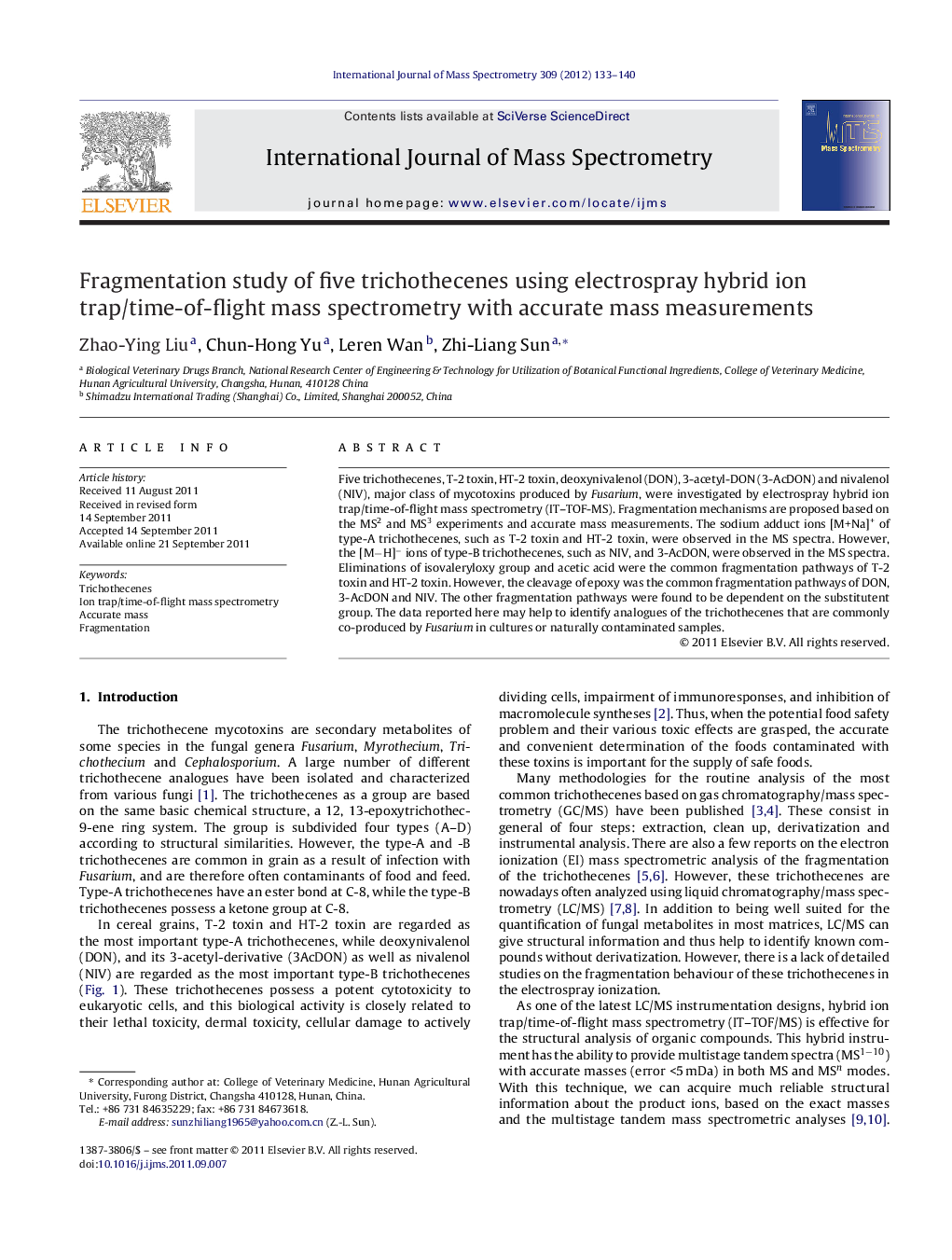| Article ID | Journal | Published Year | Pages | File Type |
|---|---|---|---|---|
| 1193198 | International Journal of Mass Spectrometry | 2012 | 8 Pages |
Five trichothecenes, T-2 toxin, HT-2 toxin, deoxynivalenol (DON), 3-acetyl-DON (3-AcDON) and nivalenol (NIV), major class of mycotoxins produced by Fusarium, were investigated by electrospray hybrid ion trap/time-of-flight mass spectrometry (IT–TOF-MS). Fragmentation mechanisms are proposed based on the MS2 and MS3 experiments and accurate mass measurements. The sodium adduct ions [M+Na]+ of type-A trichothecenes, such as T-2 toxin and HT-2 toxin, were observed in the MS spectra. However, the [M−H]− ions of type-B trichothecenes, such as NIV, and 3-AcDON, were observed in the MS spectra. Eliminations of isovaleryloxy group and acetic acid were the common fragmentation pathways of T-2 toxin and HT-2 toxin. However, the cleavage of epoxy was the common fragmentation pathways of DON, 3-AcDON and NIV. The other fragmentation pathways were found to be dependent on the substitutent group. The data reported here may help to identify analogues of the trichothecenes that are commonly co-produced by Fusarium in cultures or naturally contaminated samples.
Graphical abstractFigure optionsDownload full-size imageDownload high-quality image (89 K)Download as PowerPoint slideHighlights► The fragmentation pathways for five trichothecenes are proposed. ► Eliminations of isovaleryloxy group and acetic acid were the common fragmentation pathways of T-2 toxin and HT-2 toxin. ► The cleavage of epoxy was the common fragmentation pathways of DON, 3-AcDON and NIV.
